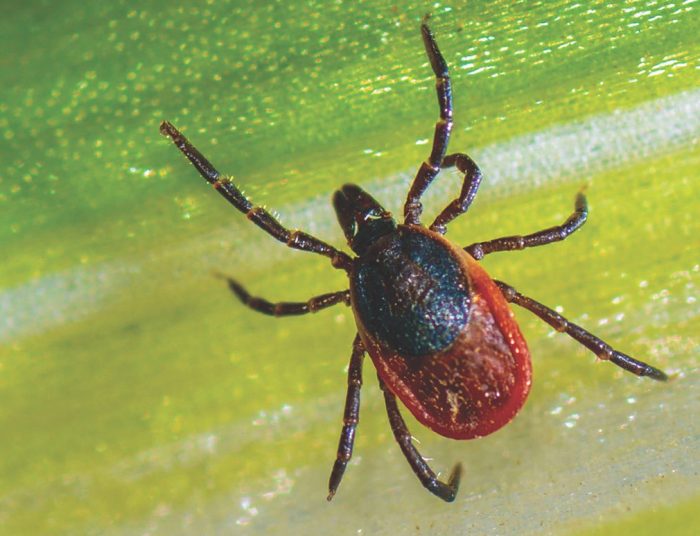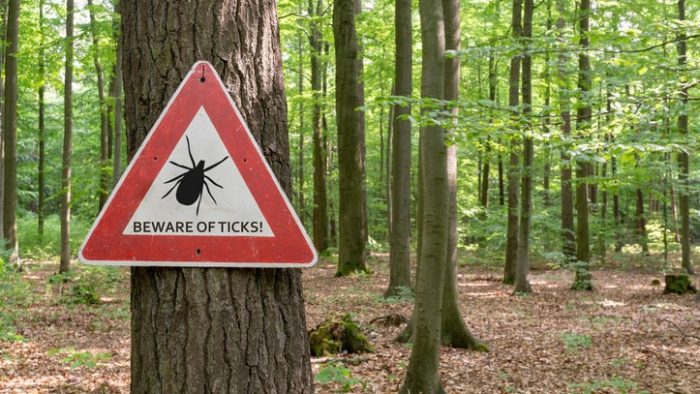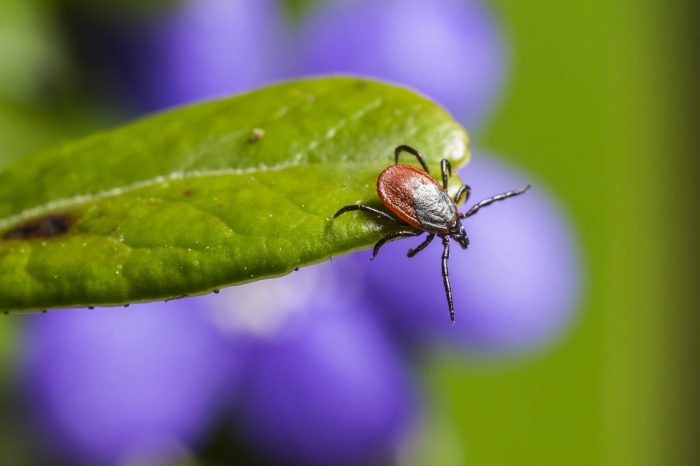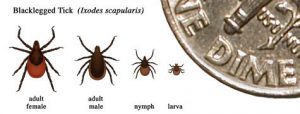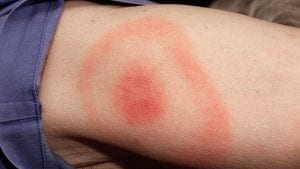The effects of Lyme disease can be debilitating
By David Dunaief, M.D.

Warm weather is imminent and, if you’re like me, you’re looking forward to enjoying more time outside this summer.
Summer’s arrival also means that tick season is in full swing, although “season” is becoming a misnomer when we refer to ticks. A June 16th New York Times article shared some of the challenges of changing tick behavior and the expansion of tick types and overlapping tick-borne diseases we’re now seeing in the Northeast (1).
The most common of these is Lyme disease, which is typically carried by deer ticks, also known as blacklegged ticks. Deer ticks can be as small as the period at the end of this sentence. The CDC site is a great resource for tick images and typical regions (2).
If a tick bites you, you should remove it with forceps, tweezers or protected fingers (paper) as close to the skin as possible and pull slow and steady straight up. Do not crush or squeeze the tick; doing so may spread infectious disease (3). In a study, petroleum jelly, fingernail polish, a hot kitchen match and 70 percent isopropyl alcohol all failed to properly remove a tick. The National Institutes of Health recommends not removing a tick with oil (4).
When you remove a tick within 36 to 48 hours, your risk of infection is low. However, you can take a prophylactic dose of the antibiotic doxycycline within 72 hours of tick removal if you are not experiencing a bulls-eye rash — a red outer ring and red spot in the center (5). This can significantly lower your risk of developing Lyme disease, although doxycycline does sometimes cause nausea.
Know Lyme symptoms
The three stages of Lyme disease are: early stage, where the bacteria are localized; early disseminated disease, where the bacteria have spread throughout the body; and late stage disseminated disease. Symptoms for early localized stage and early disseminated disease include the bulls-eye rash, which occurs in about 80 percent of patients, with or without systemic symptoms of fatigue, muscle pain and joint pain, headache, neck stiffness, swollen glands, and fever (6).
Early disseminated disease may cause neurological symptoms such as meningitis, cranial neuropathy (Bell’s palsy) and motor or sensory issues. Late disseminated disease can cause Lyme arthritis, heart problems, facial paralysis, impaired memory, numbness, pain and decreased concentration (4).
Lyme carditis is a rare complication affecting 1.1 percent of those with disseminated disease, but it can result in sudden cardiac death (7). If there are symptoms of chest pain, palpitations, light-headedness, shortness of breath or fainting, clinicians should suspect Lyme carditis.
Check for ticks
The CDC suggests wearing protective clothing, using insect repellent with at least 20 percent DEET and treating your yard. Always check your skin and hair for ticks after spending time outside. Also, remember to check your pets; even if treated, they can carry ticks into the house.
Check for Lyme infection
Lyme disease often can be diagnosed within the clinical setting or with a blood test. However, testing immediately after being bitten by a tick is not useful. It takes about one to two weeks for IgM antibodies to appear and two to six weeks for IgG antibodies (6). These antibodies sometimes will remain elevated even after successful antibiotics treatment.
Remember that a single tick can transfer more than one disease, so you might need testing for other common tick-borne diseases, as well.
Monitor for post-Lyme effects
There is an ongoing debate about whether “chronic Lyme” disease exists. In one analysis of several prospective studies, researchers recognize that there are prolonged neurologic symptoms in a subset population that may be debilitating even after Lyme disease treatment (8). These authors also suggest that there may be post-Lyme disease syndromes with joint pain, muscle pain, neck and back pain, fatigue and cognitive impairment. They note, however, that extended durations of antibiotics do not prevent or alleviate post-Lyme syndromes.
The lingering effects of Lyme can debilitate you and might be a result of systemic inflammation (9). Systemic inflammation and its symptoms can be improved significantly with dietary and other lifestyle modifications.
Prevention is key to helping stem Lyme and other tick-borne diseases. Become diligent about performing tick checks any time you’ve been outside. If you do find a tick, contact your physician immediately about prophylactic treatment.
References:
(1) “The Tick Situation is Getting Worse. Here’s How to Protect Yourself.” New York Times. 16 June 2025. online. (2) https://www.cdc.gov/ticks/about/where-ticks-live.html. (3) Pediatrics. 1985;75(6):997. (4) nlm.nih.gov. (5) Clin Infect Dis. 2008;47(2):188. (6) uptodate.com. (7) MMWR. 2014;63(43):982-983. (8) Expert Rev Anti Infect Ther. 2011;9(7):787-797. (9) J Infect Dis. 2009;199(9:1379-1388).
Dr. David Dunaief is a speaker, author and local lifestyle medicine physician focusing on the integration of medicine, nutrition, fitness and stress management. For further information, visit www.medicalcompassmd.com or consult your personal physician.

